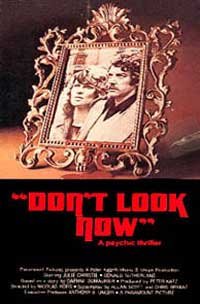Shadow of the Vampire

There are very few movies nowadays that are about movies themselves. In the film world, there aren't many movies I can recall that actually show the viewer things about movies and making them from producing to creating. In 2000, though, Shadow of the Vampire brought forth a very interesting insight about an interesting movie. It wasn't a documentary but played the role as it portrayed the creating and producing of Nosferatu, a 1922 German Expressionist movie.
The single most thing that I loved about Shadow of the Vampire was its effect to make me think I was actually in the rooms when they were directing and preparing this film. I really did feel like I was right next to them watching it happen and not viewing it through a screen. I think this is due to the people (starring in the film) not really having to act. It didn't seem like any of these actors were acting; it was almost like this was really happening and that was exactly how it happend because I noticed little stress on actually having to act. It was just so real and I think that is really neat and has a very nice effect.
Going along with the things I loved about this film, I think it is very cool that they played the role of documentary and explanation but did it in a non-typical way. It wasn't this boring two hour session with a bunch of interviews and clips from the movie. It was a lot more than this. We actually saw the movie being made and not only that, but we were allowed to see what went on in the group and throughout the movie when the scenes weren't being filmed. Sure, this movie described and explained the process of filming Nosferatu to us but did in a creative way that showed us what went on and didn't merely tell us.
Obviously the movie was centered around Nosferatu and its filming but looking into it, you can get more out of than typical interest and entertainment. I was always interested in how people produced films and the difference between that and directing and down the line of positions. This movie, although centered on the un-ethical things that went on throughout the process of filming, really introduced me to how things happen on the scene of a set for filming a movie. Learning about how an actor knows how to feel, think, look like, and exactly how to act was revealed along with how scenes were actually filmed and how the different responsibilities came together to finish the process. It was really neat that we got to see how they actually did and in many ways, do film.
As for the finding out what was actually happening throughout the creation of Nosferatu was really interesting. I never knew any of this went on until I saw this movie. To be honest, I never even heard of this movie until we watched it in class. This contributes to the storyline being an excellent one. You have to give it up to those who played in this movie and there excellence in portraying the point and much more. They were absolutely excellent, as I mentioned earlier, to the fact where it was almost like they weren't acting but it was natural.
Finally, another neat factor of the movie was its portraying of the German Expressionist period. Going into this movie, this is what I was looking for - some type of explanation as to what went on in the German Expressionist period and how things went about at this time. Although it was modernized, no fault of their own being a movie produced in 2000, I think it showed pretty well what went on in that time period and how things that affected that period affected their own movies. It kind of opened me to be more accepting to German Expressionist movies because as I saw through this movie that what they were doing, at that time period, was excellence and couldn't be that much better, it equals what we see nowadays.
Shadow of the Vampire receives my recommendation for not only an excellent informative movie on the filming of famous movie, Nosferatu, but also a great insight into film and the German Expressionist period. With its great flow and excellence acting, the movie came across in a way that is hard to beat.
-Kevin



